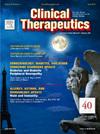The Effect of Intravenous Oxyhydrogen Nanobubble on Chronic Kidney Disease: Case Series
IF 3.6
4区 医学
Q2 PHARMACOLOGY & PHARMACY
引用次数: 0
Abstract
Background
Chronic kidney disease (CKD) is a progressive condition with limited treatment options that often lead to significant morbidity. Oxyhydrogen nanobubbles (HHOnb), a form of ultrafine gas-in-liquid dispersion containing hydrogen and oxygen, have shown potential therapeutic benefits due to their antioxidative and anti-inflammatory properties. This exploratory case series investigates the effects of intravenous HHOnb therapy in three patients with varying stages of CKD.
Methods
Three patients with CKD underwent a series of ten HHOnb infusions over a period of two to three months. The patients, aged 43–70, presented with additional comorbidities including hypertension, diabetes mellitus, and polycystic kidney disease. Clinical parameters, including glomerular filtration rate (GFR), serum creatinine, blood pressure, and uric acid levels, were monitored alongside subjective health improvements.
Results
Patient A. A 70-year-old woman with CKD grade 3a experienced a reduction in serum creatinine from 0.98 mg/dL to 0.82 mg/dL and an improvement in GFR from 59 mL/min/1.73 m² to 73.2 mL/min/1.73 m². She reported reduced leg swelling and increased vitality. Patient B. A 52-year-old man with CKD grade 4 and class III obesity showed a decrease in serum creatinine from 3.0 mg/dL to 2.86 mg/dL, an increase in GFR from 23 mL/min/1.73 m² to 24.4 mL/min/1.73 m², and improved sleep quality. Blood pressure reduced from 167/82 mmHg to 145/85 mmHg. Patient C. A 43-year-old man with CKD grade 4 and massive polycystic kidney disease reported reduced fatigue and normalized urination. His serum creatinine decreased from 3.26 mg/dL to 3.09 mg/dL, and his GFR improved from 22 mL/min/1.73 m² to 23.6 mL/min/1.73 m².
Conclusion
Although based on a small number of cases, this preliminary case series suggests that intravenous HHOnb therapy may provide renal and systemic benefits in CKD patients. Further controlled and larger-scale studies are necessary to validate these findings and assess long-term safety and efficacy.
静脉注射氢氧纳米泡对慢性肾脏疾病的影响:病例系列。
背景:慢性肾脏疾病(CKD)是一种进行性疾病,治疗选择有限,往往导致显著的发病率。氢氧纳米气泡(HHOnb)是一种含有氢和氧的超细气液分散体,由于其抗氧化和抗炎特性,已显示出潜在的治疗效果。本探索性病例系列研究了静脉注射HHOnb治疗3例不同阶段CKD患者的效果。方法:3例CKD患者在2 ~ 3个月内连续10次输注HHOnb。患者年龄43-70岁,伴有高血压、糖尿病和多囊肾病等合并症。临床参数,包括肾小球滤过率(GFR)、血清肌酐、血压和尿酸水平,在主观健康改善的同时进行监测。结果:患者A,一名患有CKD 3a级的70岁女性,血清肌酐从0.98 mg/dL降至0.82 mg/dL, GFR从59 mL/min/1.73 m²降至73.2 mL/min/1.73 m²。她报告腿部肿胀减轻,活力增强。患者b: 52岁男性,CKD 4级和III级肥胖,血清肌酐从3.0 mg/dL降至2.86 mg/dL, GFR从23 mL/min/1.73 m²增加至24.4 mL/min/1.73 m²,睡眠质量改善。血压从167/82 mmHg降至145/85 mmHg。患者c: 43岁男性,CKD 4级合并大量多囊肾病,报告疲劳减轻,排尿正常。血清肌酐由3.26 mg/dL降至3.09 mg/dL, GFR由22 mL/min/1.73 m2降至23.6 mL/min/1.73 m2。结论:虽然基于少数病例,但这一初步病例系列表明静脉注射HHOnb治疗可能对CKD患者的肾脏和全身有益。需要进一步的对照和大规模研究来验证这些发现并评估长期安全性和有效性。
本文章由计算机程序翻译,如有差异,请以英文原文为准。
求助全文
约1分钟内获得全文
求助全文
来源期刊

Clinical therapeutics
医学-药学
CiteScore
6.00
自引率
3.10%
发文量
154
审稿时长
9 weeks
期刊介绍:
Clinical Therapeutics provides peer-reviewed, rapid publication of recent developments in drug and other therapies as well as in diagnostics, pharmacoeconomics, health policy, treatment outcomes, and innovations in drug and biologics research. In addition Clinical Therapeutics features updates on specific topics collated by expert Topic Editors. Clinical Therapeutics is read by a large international audience of scientists and clinicians in a variety of research, academic, and clinical practice settings. Articles are indexed by all major biomedical abstracting databases.
 求助内容:
求助内容: 应助结果提醒方式:
应助结果提醒方式:


